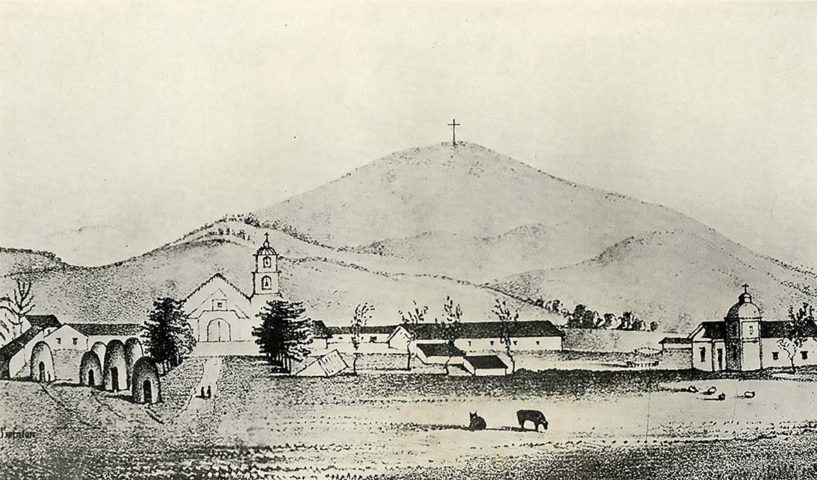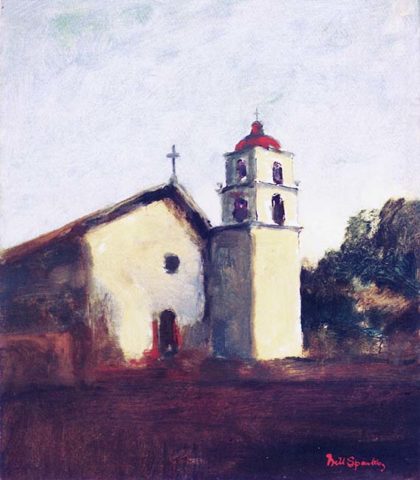Address
211 East Main Street
Ventura, CA 93001
United States

Founded:
March 31, 1782 - The 9th California Mission
Current Status:
This is an active Roman Catholic Church of the Archdiocese of Los Angeles.
Summary:
San Buenaventura was founded on March 31, 1782. Mission San Buenaventura became a parish church after it was secularized in 1836. The high altar and its reredos date to 1818. Mission Buenaventura has a well-landscaped garden, informative displays and a small, inviting museum.
211 East Main Street
Ventura, CA 93001
United States
805-643-4318 - Parish
805-648-4496 - Gift Shop
Please contact the mission directly by telephone or by visiting the mission website for the most current information.
Due to Covid-19 restrictions, it is best to check for current information.
The church invites parishioners and couples from outside Ventura to be married at the mission (at least one of the parties needs to be a practicing Catholic). A number of informational pages are available for download on the mission website. You will find information regarding the wedding coordinator as well as the necessary paperwork to be filled out prior to meeting with the wedding coordinator.
This mission has a number of annual events and activities including a May Pilgrimage Process from the Mission garden up to the Cross at Grant Park and San Buenaventura Feast Day. Here is a link to the mission calendar for the most up to date activity schedules.





1836 - one of the last missions to be secularized.
1862 - in a Proclamation signed by President Abraham Lincoln.
Saint Bonaventure, a 13th century Franciscan cardinal and renowned philosopher.

San Buenaventura was located in the land of the Chumash people. After the establishment of the mission, the neophytes were known as Ventureños.

The mission was located near the sizable Indian village of Mitsquanaqa'n with about 500 inhabitants. San Buenaventura is 70 miles north of Los Angeles in the city of Ventura which developed around the mission.
Traditional quadrangle, which was still standing as late as 1875.

A seven mile long earth and masonry zanja or aqueduct brought water from the Ventura River.
The peak years for this mission were 1802-1821. The highest recorded population was 1,328 in 1816. During the mission era there were 1,107 marriages performed at San Buenaventura.
In 1816 (the peak year) the mission had over 40,000 animals including 23,400 cattle, 12,144 sheep, and 4,493 horses (one of the largest stable of horses in the mission chain).

Over the years 1784-1834, the mission reported harvesting 191,291 bushels of wheat, barley, corn, beans, peas, lentils, garbanzos (chickpeas), and habas (broad beans).
The first church was destroyed by fire in 1792. The second church was dedicated in 1809, and reconstructed in 1816 after an earthquake. The walls are six foot thick near the base.
The church had to be restored after it was "modernized" in 1893. Restoration was completed in 1957.

A three-tiered campanario contains five bells originally borrowed from Mission Santa Bárbara. The two oldest bells date from 1781. The bell on the upper level is the newest. It was cast in 1956 in Paris.
The high altar and its reredos originated in Mexico and were installed when the church was dedicated in 1809. The Shrine of the Crucifixion on the left side of the church contains a four hundred (400) year old bulto.

Mission San Buenaventura was founded in 1782, and its location never changed. The current church (the second on the site) has been restored several times, most recently in 1957 when some "modernizations" were removed.
The Historical Image Gallery contains a number of 19th century drawings and paintings of the mission.













The Contemporary Image Gallery contains a number of photographs of the mission church and its important features.













